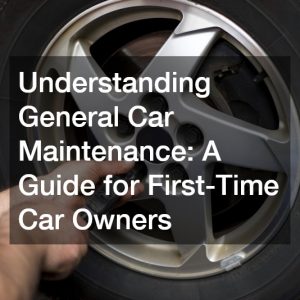Volvo is renowned for durability and longevity. This article explores how long an average Volvo can last by examining key factors such as maintenance, driving habits, and technological advancements.
Factors Influencing Volvo’s Longevity
Maintenance & Upkeep
Regular maintenance, including oil changes, brake servicing, and other routine checks, is crucial to extending the lifespan of a Volvo. Many Volvo owners understand the value of adhering to maintenance schedules to ensure their vehicles remain in optimal condition. A well-maintained vehicle not only lasts longer but also performs better on the road.
Skipping routine maintenance can significantly reduce the life expectancy of a Volvo. Commonly neglected tasks, such as changing the oil or replacing worn-out tires, can lead to more severe mechanical issues over time. Consistent upkeep is essential to avoid bringing your car to a Volvo car repair company and prolong the overall life of the vehicle.
Investing in quality parts and services is another critical aspect of maintenance. Using original equipment manufacturer (OEM) parts ensures compatibility and reliability, boosting the vehicle’s longevity. Regular visits to certified Volvo service centers can also provide expert care and specialized attention to detail.
Driving Conditions
Volvo vehicles tend to last longer when driven in less harsh conditions, avoiding extreme weather and rough terrains. Smooth paved roads and moderate climates can greatly enhance the lifespan of a Volvo. Owners who drive their vehicles gently and avoid pushing the car to its limits often see better long-term performance.
Harsh driving conditions, such as frequent stop-and-go traffic, can accelerate wear and tear on critical components. Extreme weather conditions, such as intense heat or severe cold, can also take a toll on the vehicle’s materials and systems. Navigating rough terrains regularly can strain the suspension and other essential parts, leading to early deterioration.
Driving habits play a significant role as well. Drivers who employ smooth acceleration and braking techniques, as opposed to aggressive driving styles, can extend the vehicle’s life. Understanding and respecting the capabilities of a Volvo can lead to a more durable and dependable vehicle.
Build Quality
The superior build quality and engineering precision of Volvo contribute significantly to its expected durability and longevity. Volvo is known for its commitment to safety and structural integrity, which translates to robust cars able to withstand the test of time. High-quality materials and meticulous craftsmanship ensure that each Volvo model is reliable and long-lasting.
Among the factors that set Volvo apart is its rigorous testing process. Each vehicle undergoes extensive assessments to simulate various driving conditions and identify potential weaknesses. This attention to detail results in durable cars that consistently satisfy their owners for many years.
Volvo’s continuous investment in technological advancements further enhances the build quality. Innovations in materials science and manufacturing processes enable the production of stronger, yet lightweight vehicles. These advancements not only improve performance but also contribute to extended vehicle life.
Common Lifespan Expectancies
Average Mileage
On average, a well-maintained Volvo can last over 200,000 miles, with some vehicles reaching upwards of 300,000 miles. This impressive mileage is a testament to the brand’s focus on quality and durability. Many high-mileage Volvos continue to run smoothly without major issues, provided they receive proper care.
Everyday maintenance practices, like regular oil changes and timely replacement of wear items, play a vital role in achieving these high mileages. Drivers who adhere to recommended service intervals can expect their Volvo to remain reliable well beyond the 200,000-mile mark. Routine inspections are also key to early detection and resolution of potential problems.
For many Volvo owners, reaching such high mileages is a point of pride and evidence of the vehicle’s robustness. Stories of Volvos surpassing 300,000 miles are not uncommon, implying a strong community of long-term Volvo enthusiasts. The longevity of these vehicles often translates into long-term cost savings and sustained dependability.
Model-Specific Data
Certain models, such as the Volvo 240 and Volvo XC90, are known to have particularly long lifespans due to robust design and construction. The Volvo 240, in particular, is often celebrated for its over-engineered components and sturdy build. This model set a benchmark for longevity that subsequent models have strived to meet or exceed.
The Volvo XC90, meanwhile, combines durability with modern technology and comfort. This SUV’s solid construction and advanced safety features make it capable of enduring many miles and years of use. Model-specific data consistently shows these vehicles outperforming typical lifespan expectations.
Additionally, owner reports and automotive reviews frequently highlight these models as exemplary in terms of longevity. This continued praise bolsters the reputation of these specific models within the Volvo lineup. Owners of these models often enjoy both the reliability and the legacy of Volvo’s engineering prowess.
Owner Reports
Many Volvo owners report their vehicles running smoothly for 20+ years with proper care and timely maintenance. These long-term testimonials often cite the vehicle’s dependable performance and minimal breakdowns. Positive owner experiences strengthen the perception of Volvo’s commitment to crafting durable vehicles.
The shared experiences of Volvo owners provide valuable insights into the practical lifespan of these cars. Community forums and review sites are filled with anecdotes of Volvos that have stood the test of time. These real-world experiences validate manufacturer claims about vehicle longevity.
Beyond longevity, these reports often emphasize the satisfaction Volvo owners derive from their cars. The combination of reliability, comfort, and safety contributes to a loyal customer base. For many, a Volvo remains a trusted companion through various life stages and driving needs.
Conclusion
Understanding the factors that contribute to Volvo’s longevity can help owners maximize the life of their vehicles. Regular maintenance, mindful driving, and appreciating the robust build of a Volvo can result in a vehicle that serves you well for decades. The quality engineering and positive owner testimonials further underscore the durability and long-lasting nature of Volvo cars.
.





